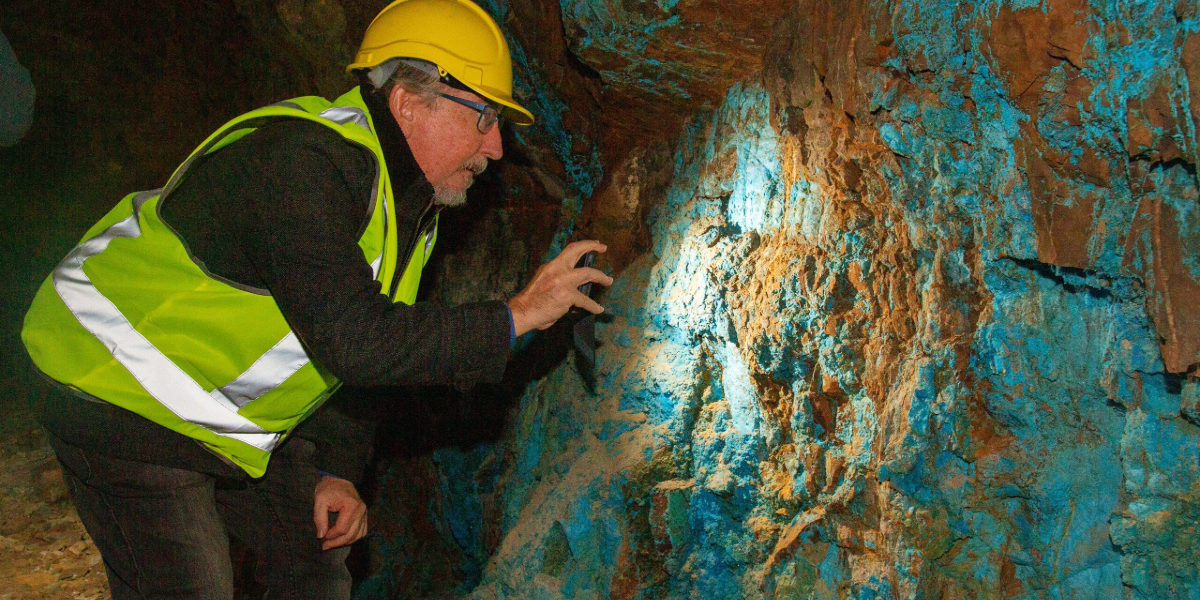The Northern Tablelands has a rich history in tin mining, with many of our tiny communities still having echos of the once thriving industry. Emmaville may soon have an active tin mine again, with the Taronga Tin Project taking the next step forward.
The Taronga project was first explored in the 60’s, 70s and 80s by mining giants BHP and Newmont. It is considered to be the world’s fifth biggest undeveloped tin project. With most of the tin in the world being produced in conflict zones and low-governance countries, and increasing demand both from exponentially increasing manufacturing of electronics (tin is a critical element in solder), and from consumers wanting conflict-free, ethically and sustainably produced goods, the future of the tin market looks good.
Current owners First Tin, a smaller mining company with projects in Germany and Australia, bought the project from Aus Tin Mining in 2022. Building on a century of knowledge from pre-existing developments and research, including extensive drilling, tunnelling and mining, the project has now reached the point of preparing an environmental Impact Statement (EIS). Similar to the process many New Englanders are familiar with for the renewable energy developments, the Taronga Project is considered a State Significant Development so its approval is managed by the Department of Planning and Environment, and this is the point in the development cycle where community consultation finds a new gear.
According to the Emmaville Mining Museum, when tin was first discovered in 1872, around 7000 people lived in the area that is now home to just 500 or so people. While this project will not return Emmaville to the kind of bustling hub it was then, the impact will be significant, with Taronga’s Chief Operations Officer Tony Truelove saying additional accommodation will be required for the incoming staff.
“If we receive state government approval, we will create over 200 jobs during construction and approximately 140 new full time jobs during operation,” Mr Truelove said.
“Taronga has a policy of local procurement first wherever possible, and we will need to build a mine camp to accommodate additional workers from outside of the area.”
Those 140 workers are expected to be working in the open pit mine for up to a decade at the Taronga site, producing around 3600 tonnes of tin concentrate per year.
“The definitive feasibility study suggested the mine can expect to produce an average of 3600 tonnes of tin in concentrate annually. The life of the mine is likely to be 8-10 years. Work is currently underway looking to increase both production and mine life.
It’s not just people they’re bringing either. Millions have been spent on the mine’s development already, which will stretch over a site of 716 hectares which includes mining infrastructure, pits, solar farm, administrative building, and a biodiversity offset area to the north.
“We have invested around $20M over the last 2 years and, if the mine goes ahead, expect to invest around $176M to build the mine, “Mr Truelove said.
“We recently attracted a $6 million investment from Metals X, an Australian-based mining and exploration company and the operator of Renison Tin Project, one of the largest tin-producing mines in Australia.”
When exactly the mine will begin operation is out of the operator’s hands.
“We currently have a scoping report with the NSW government. This will generate the Secretary’s Environmental Assessment Requirements (SEARs). The SEARs will shape the Environmental Impact Statement (EIS) which we are hoping will be completed by the end of the year.”
“The time frame for permitting is then in the hands of the Authorities. If approved, construction will take 12 months to 2 years, and then production can commence,” Mr Truelove said.
Project updates and further information on the Taronga Tin Project can be found on their website.
Top image: Tony Truelove inspecting a tunnel wall at the Taronga site (Supplied)
Something going on in your part of the region you think people should know about? Send us a news tip or email newsdesk@netimes.com.au.

